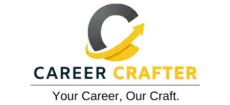Are you a mid to senior level manager struggling to land your dream job? Are you finding it difficult to stand out from the competition? The answer to your job search woes might lie in your resume. In today’s competitive job market, it’s essential to create a resume that showcases your skills, accomplishments, and potential. But what should you include and what should you leave out? In this comprehensive guide, we will explore the dos and don’ts of resume writing, providing you with valuable insights and practical tips to help you craft a compelling resume that gets noticed.
Problem:
Many mid to senior level managers face challenges when it comes to refining their resumes. They often struggle with:
1. Overloading their resumes with irrelevant information:
Including every job, skill, and achievement from the past can make your resume cluttered and overwhelming for recruiters.
2. Failing to highlight relevant accomplishments:
Hiring managers are looking for measurable results and impact. Without emphasizing your achievements, your resume might fail to make a lasting impression.
3. Lack of customization:
Using a generic resume for every application can limit your chances of success. Recruiters want to see how you align with the specific requirements of the job you’re applying for.
4. Poor formatting and presentation:
A resume that is visually unappealing and difficult to read can quickly land in the rejection pile. Formatting mistakes and lengthy paragraphs can make it hard for recruiters to find the information they’re looking for.
5. Including outdated or unnecessary information:
In an effort to provide a comprehensive work history, candidates often include outdated or irrelevant details that don’t contribute to their candidacy.
Solutions:
Now that we’ve identified the common problems, let’s dive into the solutions. Here are the essential elements to add and the ones to delete from your resume:
1. Add a professional summary or profile:
Start your resume with a strong opening statement that highlights your key skills, experiences, and career goals. This will immediately grab the attention of recruiters and provide them with a snapshot of your qualifications.
2. Include relevant accomplishments and quantifiable results:
Focus on your most significant achievements that demonstrate your impact in previous roles. Use metrics, percentages, and numbers whenever possible to showcase your contributions.
Example: “Implemented a cost-saving initiative that resulted in a 25% reduction in operational expenses, saving the company $500,000 annually.”
3. Customize your resume for each application:
Tailor your resume to match the requirements of the job you’re applying for. Analyze the job description and identify keywords and skills that are relevant to the role. Incorporate these keywords strategically throughout your resume.
4. Optimize the format and layout:
Use a clean and professional design that is easy to read. Consider using bullet points, headings, and subheadings to organize information. Stick to a consistent format and font style throughout the document.
5. Delete outdated or irrelevant information:
Remove any work experiences, skills, or certifications that are no longer relevant to your current career goals. Streamline your resume to focus on the most recent and impactful roles.
Cons:
While it’s important to know what to add and what to delete in your resume, it’s equally crucial to be aware of potential pitfalls. Here are five cons to keep in mind:
1. Don’t sacrifice clarity for brevity:
While it’s essential to keep your resume concise, be careful not to omit crucial information that showcases your qualifications.
2. Avoid excessive use of industry jargon:
While industry-specific terminology can demonstrate your expertise, too much jargon can alienate recruiters who might not be familiar with certain terms.
3. Steer clear of personal information:
In most cases, personal details such as age, marital status, and religious affiliation are irrelevant and can introduce bias into the hiring process. Focus on professional qualifications and experiences instead.
4. Be cautious with graphics and design elements:
While a visually appealing resume can catch the eye, excessive use of graphics, colors, and complex formatting can make your resume difficult to scan and may not be compatible with applicant tracking systems (ATS) used by many companies.
5. Don’t include references on your resume:
It’s no longer necessary to provide references directly on your resume. Instead, have a separate document prepared with your references and provide it upon request.
By being mindful of these potential pitfalls, you can ensure that your resume is concise, relevant, and professional, maximizing your chances of landing your desired job.
Example 1:
In the past, I worked as a Senior Operations Manager at XYZ Company, where I successfully implemented process improvements that resulted in a 20% increase in productivity and a cost savings of $100,000 annually. By focusing on the relevant achievements and quantifiable results, I was able to highlight my impact in previous roles and grab the attention of hiring managers.
Example 2:
I customized my resume for a Senior Project Manager position by incorporating keywords and skills from the job description. By emphasizing my experience in leading cross-functional teams and delivering projects on time and within budget, I was able to demonstrate my suitability for the role. This targeted approach significantly increased my chances of getting noticed by recruiters.
Example 3:
Previously, I had a lengthy resume that included every job I had ever held. However, I realized that some of the early positions were not relevant to my current career goals. By deleting outdated and irrelevant information, I was able to streamline my resume and focus on the experiences and skills that mattered most to prospective employers. This made it easier for recruiters to quickly identify my qualifications and achievements.
Example 4:
I paid close attention to the format and layout of my resume, ensuring it was visually appealing and easy to read. By using bullet points to highlight key responsibilities and accomplishments, and organizing information under clear headings, I created a resume that was visually appealing and easy to navigate. Recruiters appreciate resumes that are well-structured and user-friendly.
Example 5:
During my resume revision process, I removed personal details such as my marital status and age. I realized that these details were not relevant to my qualifications and could potentially introduce bias into the hiring process. By focusing solely on my professional qualifications and experiences, I presented myself as a qualified candidate based on merit, rather than personal characteristics.
In conclusion, crafting a compelling resume involves knowing what to add and what to delete. By focusing on relevant accomplishments, customizing your resume, optimizing its format, and removing outdated or irrelevant information, you can create a powerful document that captures the attention of hiring managers. Remember to avoid common pitfalls such as sacrificing clarity for brevity, excessive use of jargon, and including personal information. By following these guidelines, you can increase your chances of success and land that coveted mid to senior level management position you’ve been dreaming of. Good luck!
Conclusion
:Crafting a compelling resume is a crucial step in the job search process, especially for mid to senior level managers. Throughout this extensive guide, we have explored the key elements of what to add and what to delete in your resume. By focusing on relevant accomplishments, customizing your resume, optimizing its format, and removing outdated or irrelevant information, you can create a powerful document that effectively showcases your qualifications and impresses hiring managers.
Remember, a well-crafted resume is your ticket to opening doors of opportunity and landing that dream job. It’s not just about listing your experiences, but about strategically presenting your unique value proposition. By implementing the insights and practical tips shared in this blog, you can confidently tackle the challenges of resume writing and stand out among the competition.
So, take the time to refine and polish your resume. Tailor it for each application, emphasizing your achievements and aligning your skills with the job requirements. And always keep in mind the importance of presentation, clarity, and relevance.
With your revamped resume in hand, you are now equipped to navigate the job market with confidence and showcase your true potential. Remember, the right opportunity is out there waiting for you. Seize it with a resume that leaves a lasting impression. Best of luck on your job search journey!

